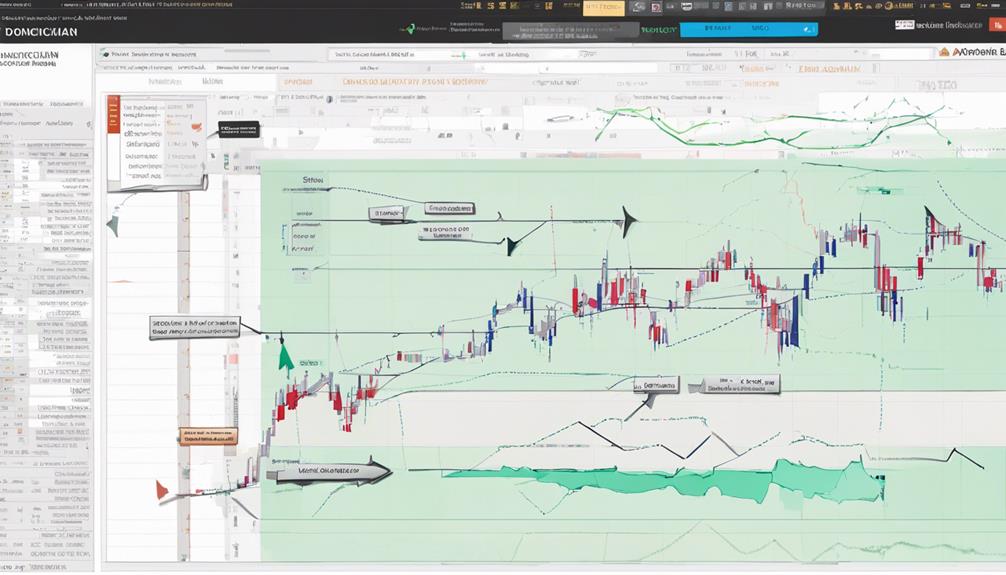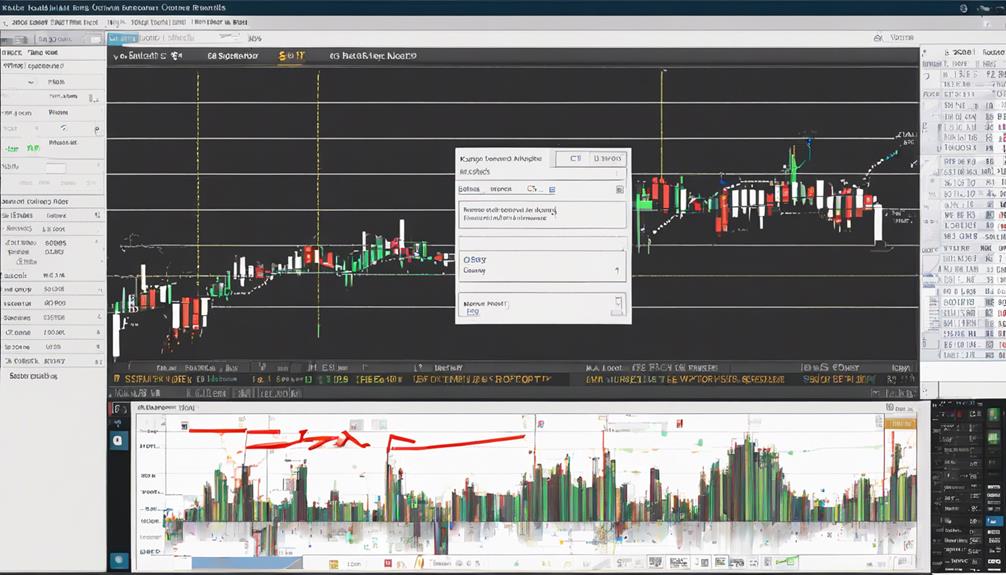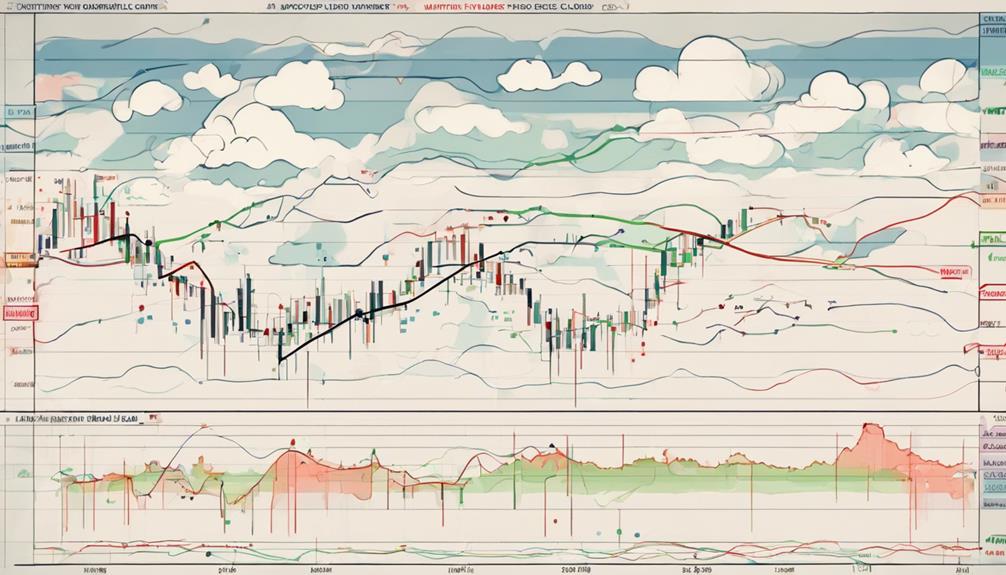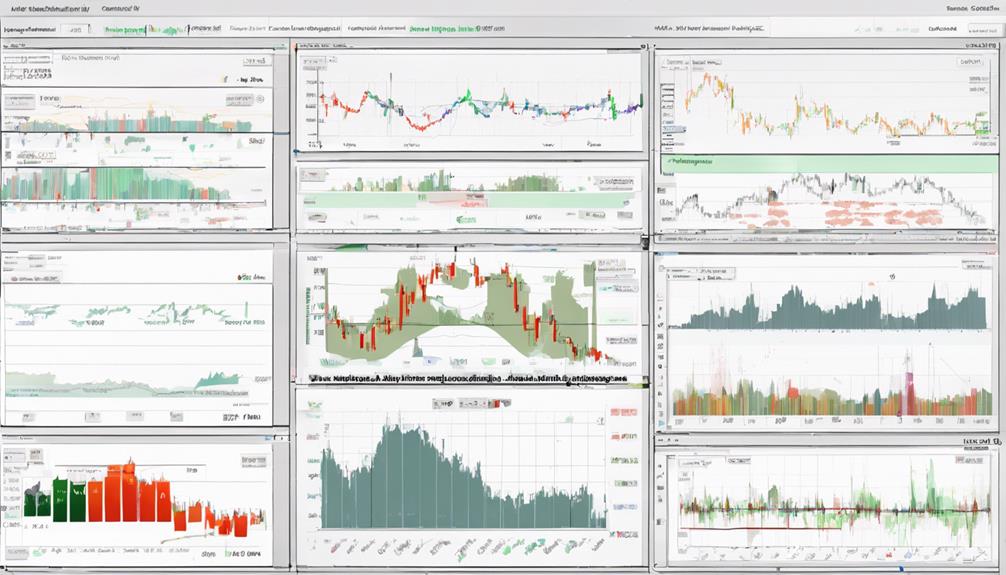In the realm of financial markets, understanding the intricate world of volatility indicators is paramount for informed decision-making and successful trading strategies. These indicators serve as invaluable tools for traders seeking to navigate the unpredictable waters of market fluctuations.
With a myriad of indicators at one's disposal, each offering unique insights and perspectives, a comprehensive guide on volatility indicators is not just a resource but a necessity in today's dynamic trading landscape.
As we explore the nuances of these indicators and their practical applications, we uncover a wealth of knowledge waiting to be unlocked, empowering traders to decipher market trends and make well-informed decisions.
Understanding Bollinger Bands
Bollinger Bands, a technical analysis tool developed by John Bollinger, provide traders with a visual representation of price volatility and potential trend reversals. The bands consist of a central simple moving average line, flanked by dynamically adjusting upper and lower bands based on the average true range (ATR) of price movements. These bands act as volatility indicators, expanding during periods of high volatility and contracting during low volatility phases.
Traders often use Bollinger Bands to identify entry and exit points in the market. When prices touch or exceed the upper band, it may indicate overbought conditions, while breaching the lower band suggests oversold conditions. Transitioning from low to high volatility periods can signal changes in market sentiment and potential trend shifts.
Mastering Donchian Channels

Utilizing Donchian Channels in technical analysis allows traders to leverage price highs and lows over a specific timeframe to identify potential market trends and reversals effectively.
Donchian Channels are a valuable tool for traders as they provide non-directional signals based on price extremes within a specified period. Higher channel levels typically indicate bullish trends, while lower levels suggest bearish trends.
Traders can use Donchian Channels to pinpoint potential reversals in the market and identify key points for trend continuation. Moreover, these channels offer insights into market volatility by focusing on price extremes and can help traders gauge the level of price fluctuation within a chosen timeframe.
One of the key advantages of Donchian Channels is their sensitivity to settings, allowing traders to customize them based on market conditions for optimal performance.
Utilizing Keltner Channel

Based on the average true range (ATR) and utilizing bands to depict price volatility, Keltner Channels serve as a valuable tool for traders seeking to analyze potential breakouts, reversals, and trend strength in the market. These channels provide a dynamic visualization of price movements, helping traders identify overbought and oversold conditions as prices reach the outer bands.
By adjusting the settings of Keltner Channels, traders can tailor them to different market conditions, enhancing their effectiveness in assessing volatility. Moreover, Keltner Channels offer insights into potential support and resistance levels based on market volatility, aiding traders in making informed decisions.
The ability to visualize price volatility within a defined range makes Keltner Channels a versatile tool for technical analysis, allowing traders to gauge the strength of trends and anticipate potential reversals. Overall, Keltner Channels serve as a comprehensive tool for traders looking to navigate market dynamics effectively.
Decoding Ichimoku Clouds

When analyzing market trends and potential price movements, understanding the intricacies of Ichimoku Clouds can provide traders with a comprehensive view of market dynamics. The Ichimoku Cloud indicator incorporates five inputs, including three moving averages, to offer a holistic perspective on the market.
Some key aspects to consider when decoding Ichimoku Clouds include:
- The green cloud acts as support during uptrends, indicating potential buying opportunities.
- The red cloud functions as resistance during downtrends, highlighting areas where selling pressure may intensify.
- Bullish divergence is observed when the price is above the red cloud, suggesting a potential upward trend, while bearish divergence occurs when the price cuts through the green cloud, signaling a possible downward movement.
Interpreting Ichimoku Clouds accurately requires specific settings such as 9, 26, 52, 26 and a keen eye for trends to identify crucial support and resistance levels for making informed trading decisions.
Analyzing Historical Volatility

Analyzing Historical Volatility provides traders with valuable insights into past price fluctuations and market dynamics, aiding in the identification of support and resistance levels for making informed trading decisions. Historical volatility is calculated using standard deviations to measure the variability of past price movements over a chosen period, typically the last 20 or 30 trading days.
By analyzing historical volatility, traders can determine trading ranges based on the high and low volatility experienced in the past. This information is crucial for identifying potential support and resistance levels where the price has historically struggled to move beyond, presenting opportunities for traders to enter or exit positions.
Moreover, historical volatility assists in pinpointing tradable highs and lows, allowing traders to anticipate potential price fluctuations and make well-informed decisions. Understanding past price behavior through historical volatility can significantly enhance a trader's ability to recognize patterns and trends, ultimately leading to more successful trading opportunities.
What Are the Best Volatility Indicators to Use According to Your How-to Guide?
When it comes to understanding market fluctuations, having the right tips for volatility indicators is crucial. Some of the best indicators to use include Bollinger Bands, Average True Range (ATR), and the Relative Strength Index (RSI). By incorporating these indicators into your trading strategy, you can make more informed decisions.
Frequently Asked Questions
What Is the Best Indicator for Volatility?
The best indicator for volatility varies based on individual trader preferences, style, and market dynamics. Bollinger Bands are favored for trend shifts, ATR for setting stop-loss orders, and VIX for gauging market sentiment on future volatility.
How Do You Use the Volatility Index Indicator?
To use the Volatility Index (VIX) indicator effectively, monitor its levels closely to assess market sentiment and potential price swings. High VIX values indicate increased volatility and risk, prompting traders to adjust their strategies accordingly for optimal decision-making.
What Is the Best Indicator for Iv?
The best indicator for implied volatility (IV) is the VIX (CBOE Volatility Index). VIX measures market expectations for future volatility in the S&P 500 index, providing traders with insights into investor sentiment and market risk levels.
How Do You Trade With Chaikin Volatility Indicator?
Trading with the Chaikin Volatility Indicator involves analyzing price ranges over a set period to gauge market volatility. Rising values signal increased volatility, prompting adjustments to trading strategies. Understanding these trends aids traders in managing risk effectively.
Conclusion
In conclusion, mastering volatility indicators is crucial for successful trading strategies. By understanding Bollinger Bands, Donchian Channels, Keltner Channel, Ichimoku Clouds, and historical volatility, investors can make informed decisions and navigate the market with confidence.
These indicators serve as a compass, guiding traders through the turbulent waters of market fluctuations. Just as a skilled sailor relies on the stars to navigate the seas, traders can rely on volatility indicators to steer their investments towards success.
